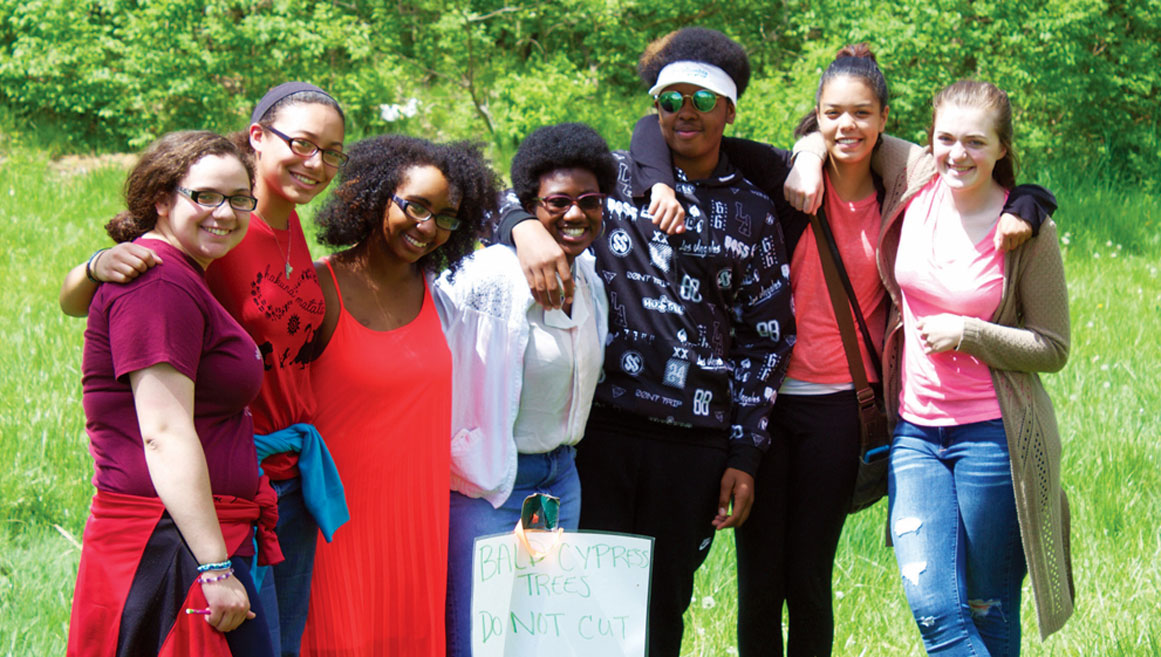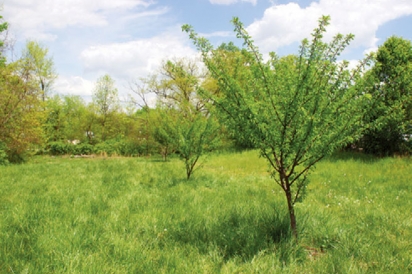Bumper Harvest: Lessons Bloom Abundantly in School Gardens
“Ms. Mullins! Ms. Mullins! Are they growing yet?”
I am standing within the grape-vine-lined fence that creates the barrier for the school garden at Minors Lane Elementary. Raised beds and old wooden barrels speckle the winter-worn landscape of the garden, all filled with fresh soil and several dotted with newly planted zucchini seedlings. Children are filing back into the school building after a routine fire drill and can’t resist the urge to peer at the garden, where they have each had a chance to work with Carrie Mullins, the STEM (Science, Technology, Engineering, Math) teacher for Minors Lane.
Mullins is the sole caretaker of the school’s garden and begins each new school term with a yearlong lesson plan that brings the classroom into the garden at every turn. Seasonal considerations drive the choice of quick-growing spring crops like greens and radishes.
Enjoying a fresh-picked salad is a highlight of the year for several of her students. “They absolutely love raw kale” Mullins says, adding that none of the kids has ever refused to sample the veggies they grow.
As students are required to be in the STEM classroom every year of their elementary schooling, Mullins works to ensure they have a new garden experience grade-by-grade, putting lessons learned in kindergarten to practical use in later years. The connection of the garden to the classroom is more transparent when it comes to science: Lessons of pollination and a hands-on understanding of plants’ root systems are a natural fit. Integrating the garden experience into other curriculums may feel stretched, yet Mullins has found ways to coalesce every lesson, using pea pods for counting exercises with the kindergarteners and then taking those same peas and creating math problems with the older grades.
Garden beds double as blank slates for graphs and grids and stories in schoolbooks like The Giant Jam Sandwich are brought to life when fruits are harvested and turned into jelly. Then there are the lessons you can’t find in textbooks: problem solving, responsibility, respect for one another and the land.
These were the same lessons the students at Fern Creek High School were quick to tell me have made a fundamental impact on their life and their worldviews. And it all starts with getting them outside.
“Franzen tells us all the first day of class: ‘You have my trust until you break it,’” says Don, a 10th grader, of teacher Joe Franzen. I am walking with Don and several members of Franzen’s class through their orchard, a myriad of apple, pear and newly planted pawpaw trees that stretch far past the school building and the large greenhouse and garden space the class looks after. I ask if they were all friends prior to the garden. Despite their infectious camaraderie, the answer is no. It seems that social status and other typical high school dividers have no place in the garden.
“My favorite part about the garden is being with everyone. We’re a family and there is no way one person can do this alone. We must work together,” says Cheyenne, a junior. “Yes” agrees Pearle, a junior on the tree-grafting team, “we are all partners in the same goal.”
Derrik, a junior as well, became involved with the garden through the Environmental Club. “More than anything it has helped me learn to be more interactive, more social,” he says. Of course, practical curriculum is in place in addition to the less tangible takeaways, including lessons in marketing, literature and global studies.
“More than anything, I love that I am learning how to do something that will have a positive impact,” says Don. “Socially, I have learned to never judge a book by its cover. This class has bridged social gaps. Not everyone is the same but not everyone is different.”
It’s hard to argue that these aren’t the most valuable lessons, the greatest measure of a school garden’s value. These lessons are rivaled only by the peace the garden grants so many children, regardless of age or background. It is a safe place, a place where students find refuge from challenges in their homes, a place where they are accepted just the way they are and, hence, emboldened to do more—to think bigger, more globally and less selfishly.






